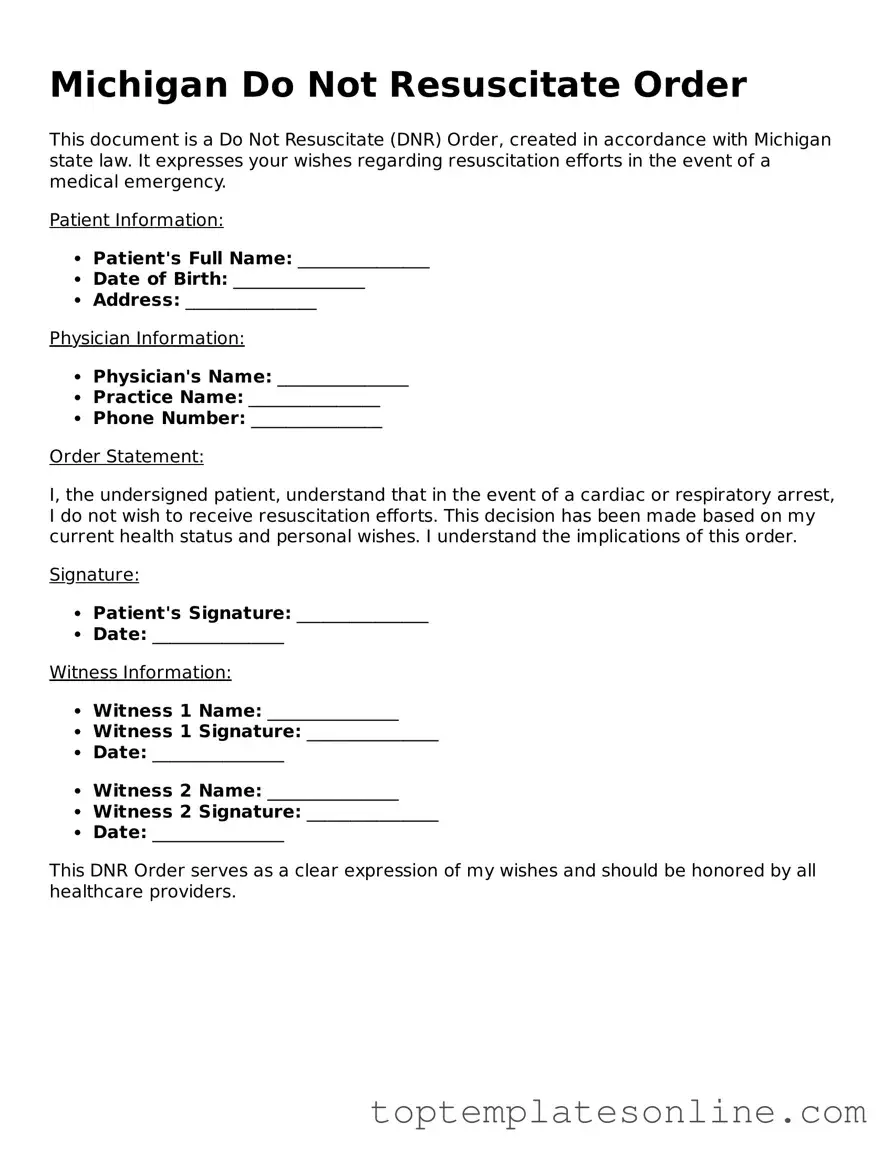The Michigan Do Not Resuscitate (DNR) Order form serves as a crucial document for individuals who wish to express their preferences regarding medical interventions in the event of a cardiac arrest or respiratory failure. This form is designed to communicate a person's desire to forgo resuscitation efforts, such as chest compressions or intubation, when they are unable to voice their wishes. It is important for patients, families, and healthcare providers to understand that the DNR Order is not a directive to withhold all medical care; rather, it specifically addresses the use of resuscitative measures. The form must be completed and signed by a licensed physician, and it requires the patient's signature or that of a legally authorized representative. In Michigan, the DNR Order is recognized by emergency medical services, ensuring that first responders honor the patient's wishes. Additionally, individuals can carry a wallet-sized version of the DNR Order for easy access, further ensuring that their preferences are respected in critical situations. Understanding the implications and requirements of the DNR Order is essential for making informed healthcare decisions and fostering open conversations about end-of-life care.
